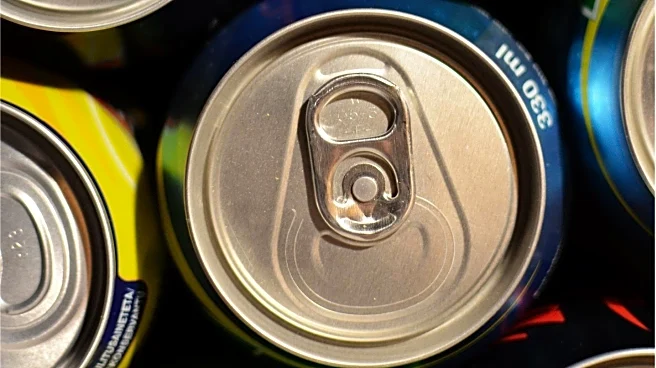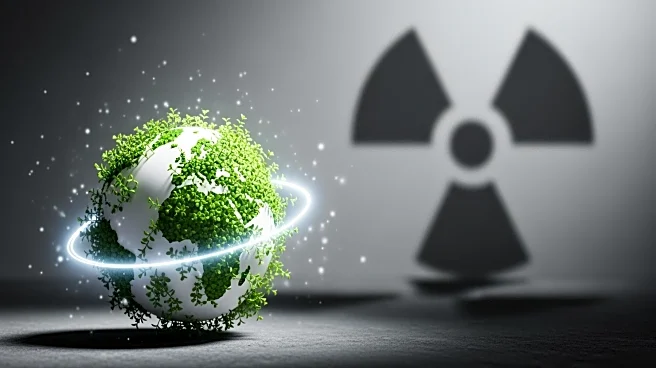What's Happening?
A recent study has investigated the sex-specific differences in the retention and elimination of radioactive cesium-137 (137Cs) in mice. The research focused on chronic low-dose exposure through drinking water, simulating conditions similar to those experienced
by populations affected by nuclear accidents like Chernobyl. The study found that male mice accumulated more 137Cs in their bodies than females at higher contamination levels (500 kBq/L), while at lower concentrations (20 and 100 kBq/L), the differences were not significant. The research highlighted that muscle tissue is the primary site of 137Cs accumulation, with males showing higher retention in muscle compared to females. The study also noted that females exhibited a higher rate of 137Cs excretion through urine, suggesting enhanced renal elimination compared to males.
Why It's Important?
The findings of this study are significant as they provide insights into the biological differences in radioactive substance retention between sexes, which could have implications for human health risk assessments following nuclear exposure. Understanding these differences is crucial for developing gender-specific medical treatments and safety protocols in the event of radioactive contamination. The study suggests that females may have a natural advantage in eliminating 137Cs, which could inform future research on improving decontamination strategies. Additionally, the research underscores the importance of considering sex-specific physiological responses in radiation protection and public health policies.
What's Next?
Further research is needed to explore the molecular mechanisms underlying the observed sex-specific differences in 137Cs metabolism. Investigating the role of sex hormones, renal transporters, and genetic factors could provide valuable insights into therapeutic targets for enhancing 137Cs clearance. The study's findings may prompt additional studies to confirm these results in humans and to develop personalized approaches to radiation exposure management. Moreover, the research community may focus on refining dosimetry models to better account for sex-specific differences in radiation absorption and effects.
Beyond the Headlines
The study raises important questions about the threshold effects of radioactive exposure and the role of physiological mechanisms in sex-specific responses. It suggests that at higher contamination levels, differences in renal function and ion transporters become more pronounced, influencing 137Cs metabolism. This research highlights the need for personalized approaches in radiation protection, considering individual variability in biokinetics and radiation response. The findings could lead to a reevaluation of current radiation safety standards and the development of more effective decontamination strategies.














